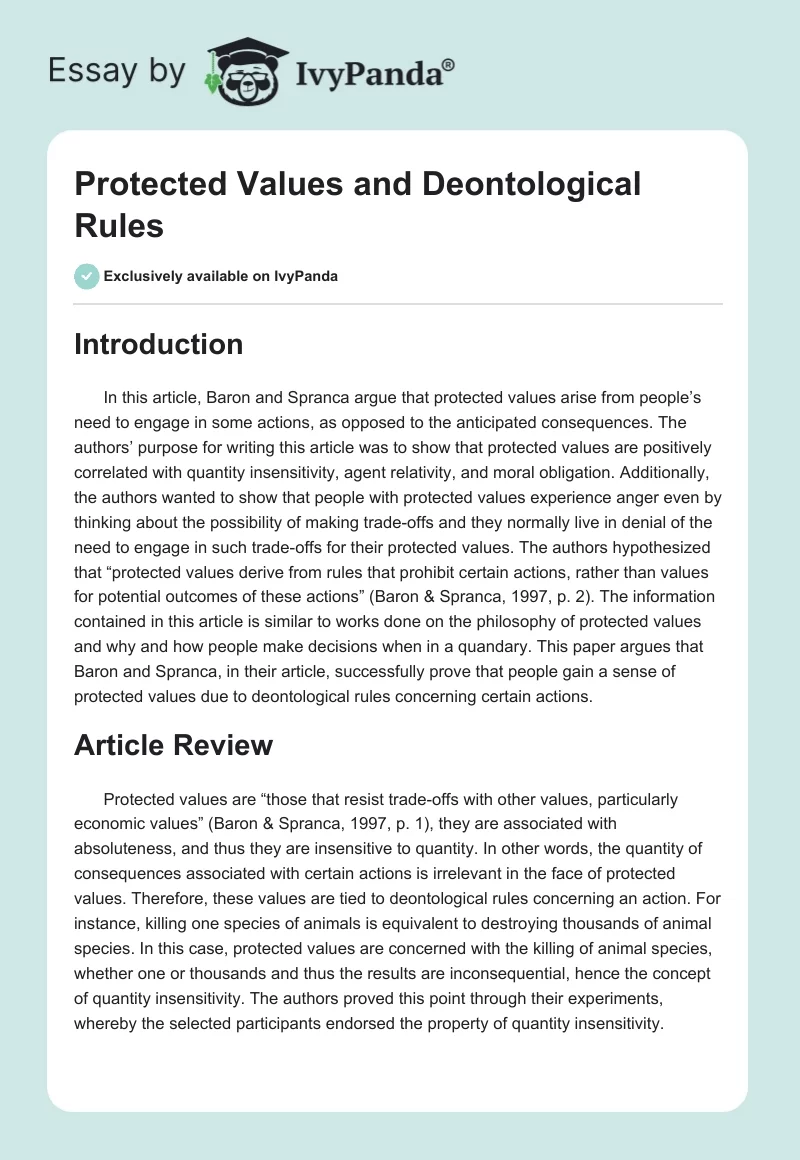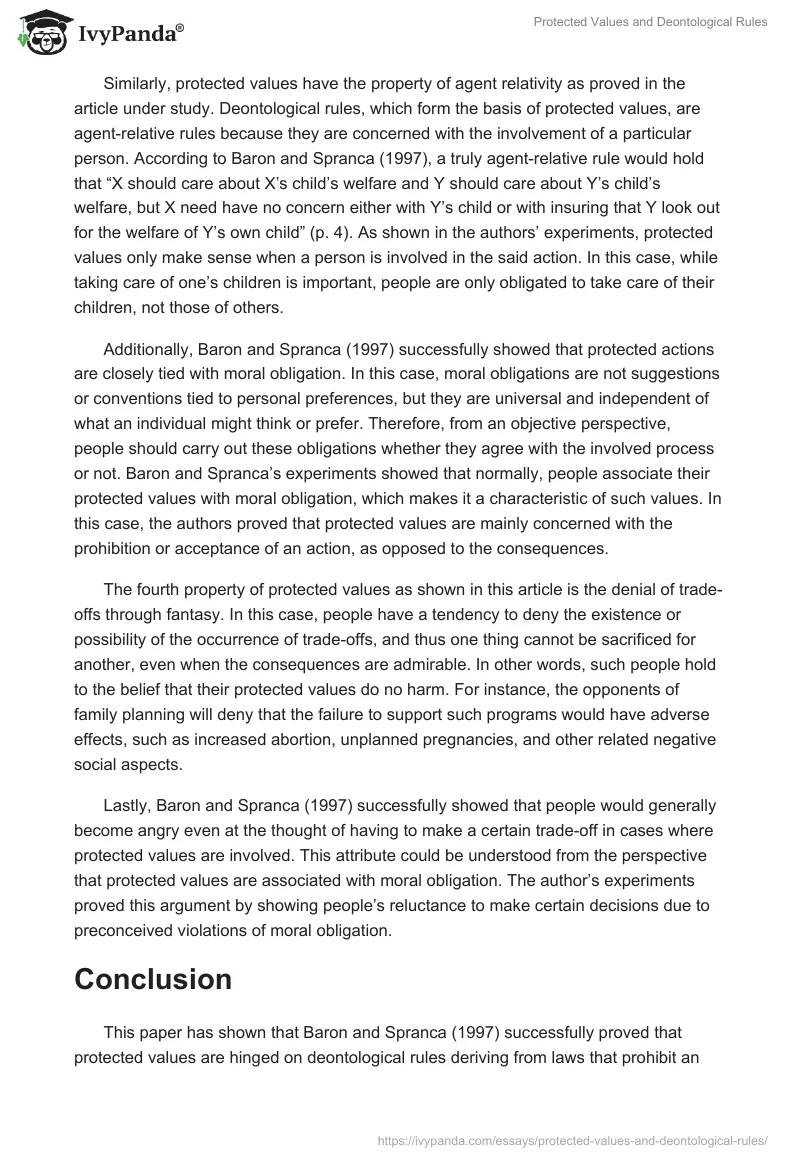Introduction
In this article, Baron and Spranca argue that protected values arise from people’s need to engage in some actions, as opposed to the anticipated consequences. The authors’ purpose for writing this article was to show that protected values are positively correlated with quantity insensitivity, agent relativity, and moral obligation. Additionally, the authors wanted to show that people with protected values experience anger even by thinking about the possibility of making trade-offs and they normally live in denial of the need to engage in such trade-offs for their protected values. The authors hypothesized that “protected values derive from rules that prohibit certain actions, rather than values for potential outcomes of these actions” (Baron & Spranca, 1997, p. 2). The information contained in this article is similar to works done on the philosophy of protected values and why and how people make decisions when in a quandary. This paper argues that Baron and Spranca, in their article, successfully prove that people gain a sense of protected values due to deontological rules concerning certain actions.
Article Review
Protected values are “those that resist trade-offs with other values, particularly economic values” (Baron & Spranca, 1997, p. 1), they are associated with absoluteness, and thus they are insensitive to quantity. In other words, the quantity of consequences associated with certain actions is irrelevant in the face of protected values. Therefore, these values are tied to deontological rules concerning an action. For instance, killing one species of animals is equivalent to destroying thousands of animal species. In this case, protected values are concerned with the killing of animal species, whether one or thousands and thus the results are inconsequential, hence the concept of quantity insensitivity. The authors proved this point through their experiments, whereby the selected participants endorsed the property of quantity insensitivity.
Similarly, protected values have the property of agent relativity as proved in the article under study. Deontological rules, which form the basis of protected values, are agent-relative rules because they are concerned with the involvement of a particular person. According to Baron and Spranca (1997), a truly agent-relative rule would hold that “X should care about X’s child’s welfare and Y should care about Y’s child’s welfare, but X need have no concern either with Y’s child or with insuring that Y look out for the welfare of Y’s own child” (p. 4). As shown in the authors’ experiments, protected values only make sense when a person is involved in the said action. In this case, while taking care of one’s children is important, people are only obligated to take care of their children, not those of others.
Additionally, Baron and Spranca (1997) successfully showed that protected actions are closely tied with moral obligation. In this case, moral obligations are not suggestions or conventions tied to personal preferences, but they are universal and independent of what an individual might think or prefer. Therefore, from an objective perspective, people should carry out these obligations whether they agree with the involved process or not. Baron and Spranca’s experiments showed that normally, people associate their protected values with moral obligation, which makes it a characteristic of such values. In this case, the authors proved that protected values are mainly concerned with the prohibition or acceptance of an action, as opposed to the consequences.
The fourth property of protected values as shown in this article is the denial of trade-offs through fantasy. In this case, people have a tendency to deny the existence or possibility of the occurrence of trade-offs, and thus one thing cannot be sacrificed for another, even when the consequences are admirable. In other words, such people hold to the belief that their protected values do no harm. For instance, the opponents of family planning will deny that the failure to support such programs would have adverse effects, such as increased abortion, unplanned pregnancies, and other related negative social aspects.
Lastly, Baron and Spranca (1997) successfully showed that people would generally become angry even at the thought of having to make a certain trade-off in cases where protected values are involved. This attribute could be understood from the perspective that protected values are associated with moral obligation. The author’s experiments proved this argument by showing people’s reluctance to make certain decisions due to preconceived violations of moral obligation.
Conclusion
This paper has shown that Baron and Spranca (1997) successfully proved that protected values are hinged on deontological rules deriving from laws that prohibit an action as opposed to the expected consequences. Therefore, to refute the relevance of consequences in an action, protected values are characterized by agent relativity, quantity insensitivity, moral obligation, denial, and anger. Concerning the last paragraph at the end of the article, I think that the authors are right in the arguments made therein. Making policies that consider protected values for all people is impossible, as a society cannot take into account all these values given the underlying heterogeneity. Ultimately, policymakers have to decide which trade-offs are worth making based on utilitarianism, given that the public will be affected by such decisions.
Reference
Baron, J., & Spranca, M. (1997). Protected values. Organizational Behavior and Human Decision Processes, 70(1), 1-16.


